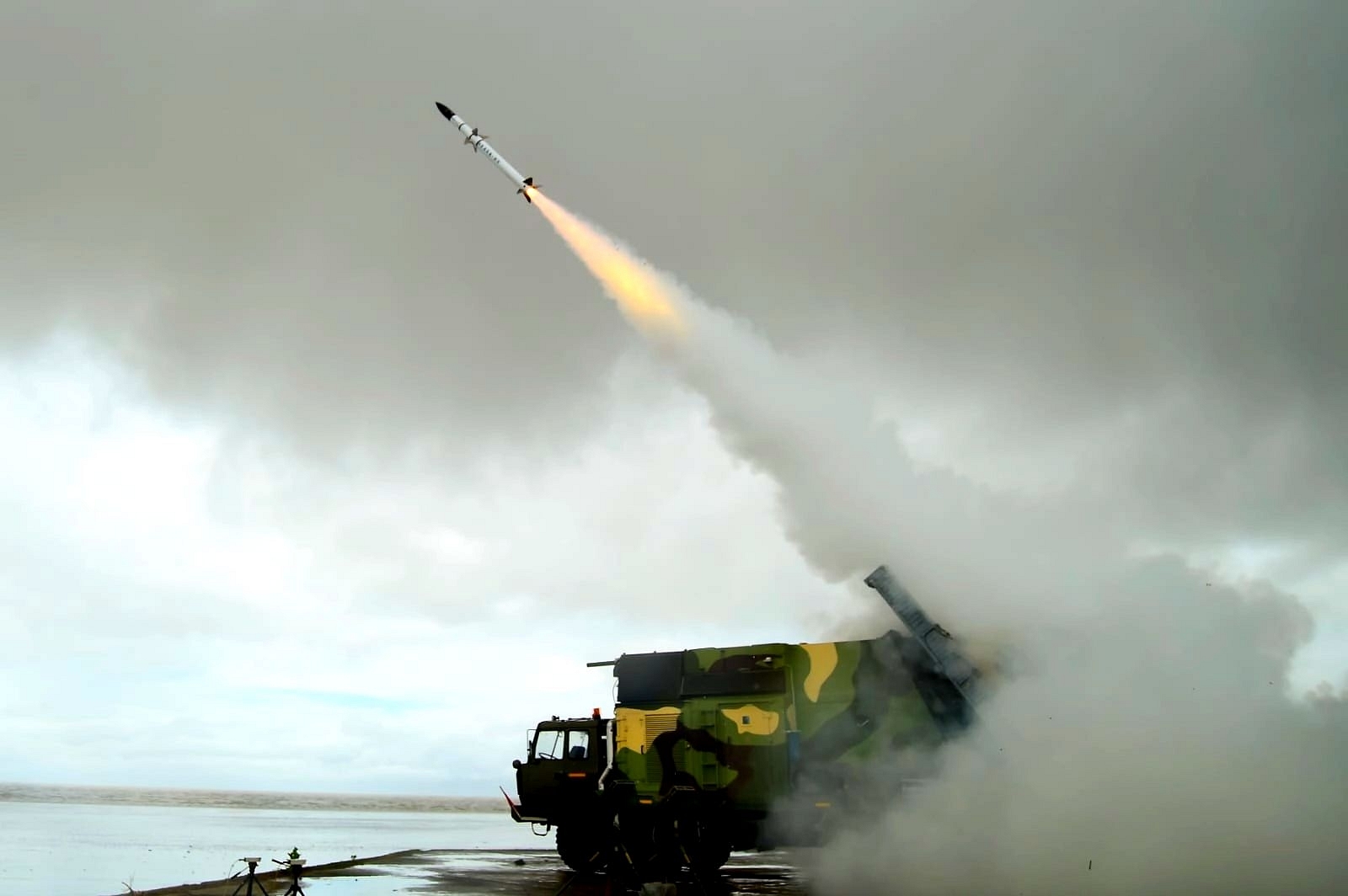Defence
India Tests Akash NG Missile Second Time This Week; Can Shoot Down Aerial Threats With Low Radar Cross-Section
- Akash NG is has been equipped with a new, two-pulse, solid rocket motor.

DRDO successfully flight-tests surface-to-air missile Akash-NG. (DRDO/Twitter)
The New Generation Akash missile, or Akash NG, was test-fired earlier today from the Integrated Test Range in Odisha's Chandipur. It was the second test of the missile this week — the first one was conducted on 21 July.
The missile, flight-tested for the first time in January this year, is a major improvement over the older Akash missile, which is already in service with the Indian Army and the Air Force.
The weapon system has been tested in the deployment configuration, with all its elements — multifunction radar, command, control and communication system and launcher — participating in the trials.
Akash NG is capable of shooting down with precision high-maneuvering and low radar cross-section aerial threats.
The weapon system has multiple critical upgrades over its predecessor.
It comes with a new, two-pulse, solid rocket motor that is a replacement for the ramjet used in the older Akash missile.
The dual pulse motor enables the missile to deal with highly maneuvering threats. It gives the missile the ability to produce a high terminal velocity, allowing it to engage the fastest and most agile aerial threats.
In the tests conducted this week, the new missile has demonstrated the high maneuverability required for taking out fast and agile targets.
Akash NG has been equipped with a new seeker. A seeker locks on to the target and guides the missile to it. The seeker used on Akash NG has been designed for aerial threats with low radar cross-section area.
The missile system detects a target at a range of around 80 kilometers. By the time the threat is 50 kilometers away, the weapon system's command and control units calculate the trajectory of launch, determine the point of impact and send a missile towards the target.
The comprehensive overhaul of the existing Akash system has resulted in a major reduction in weight. Unlike the older Akash rocket, which weighed around 700 kg, the new one has a weight of 350 kg.
The reduced weight of the missile not only makes it more agile but also increases its range. Due to the lower weight of the missile, the launch vehicle can carry more missiles in total.
The new missile system also offers better deployability because it comes with a smaller ground system footprint and canastarised launcher.
The missile will offer the armed forces an alternative to imported systems as the agility of aerial threats increases and cross-section decreases.
Introducing ElectionsHQ + 50 Ground Reports Project
The 2024 elections might seem easy to guess, but there are some important questions that shouldn't be missed.
Do freebies still sway voters? Do people prioritise infrastructure when voting? How will Punjab vote?
The answers to these questions provide great insights into where we, as a country, are headed in the years to come.
Swarajya is starting a project with an aim to do 50 solid ground stories and a smart commentary service on WhatsApp, a one-of-a-kind. We'd love your support during this election season.
Click below to contribute.
Latest